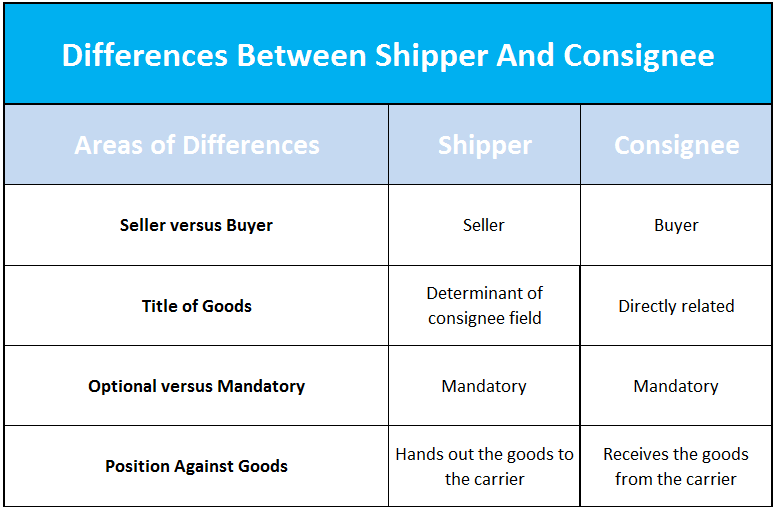Bill of lading is a transport document covering the carriage of goods by sea.
Consignee means a person entitled to take delivery of the goods under a contract of carriage indicated on a bill of lading.
Shipper means a person that enters into a contract of carriage with a carrier. Shipper also known as consignor.
On today’s post I explain the main differences between the consignee and shipper fields of bills of lading.
Differences Between Consignee and Shipper
Seller versus Buyer:
Usually consignor is the exporter and consignee is the importer in any shipping document used in international trade. Bill of lading is not an exception.
Position Against Goods:
Consignor hands out the goods to the carrier at the port of loading. Consignee takes delivery of the goods from the carrier at the port of discharge.
Title of Goods:
Consignee field determines how title of goods will be delivered from the shipper to the consignee.
- Consignee field determines if the bill of lading issued in straight, negotiable or bearer format.
Shipper determines how consignee field is completed by giving necessary instructions to the carrier.
Related Articles:
- Notify Party of a Bill of Lading
- Consignee of a Bill of Lading
- How to Complete a Bill of Lading under a Letter of Credit Payment?
- Parties on a Bill of Lading: Shipper, Consignee, Notify Party and Carrier
- To Order and Blank Endorsed Bill of Lading
- What are the Differences Between a Bill of Lading and a Charter Party Bill of Lading?
- Freight Forwarder’s Bill of Lading Not Acceptable
